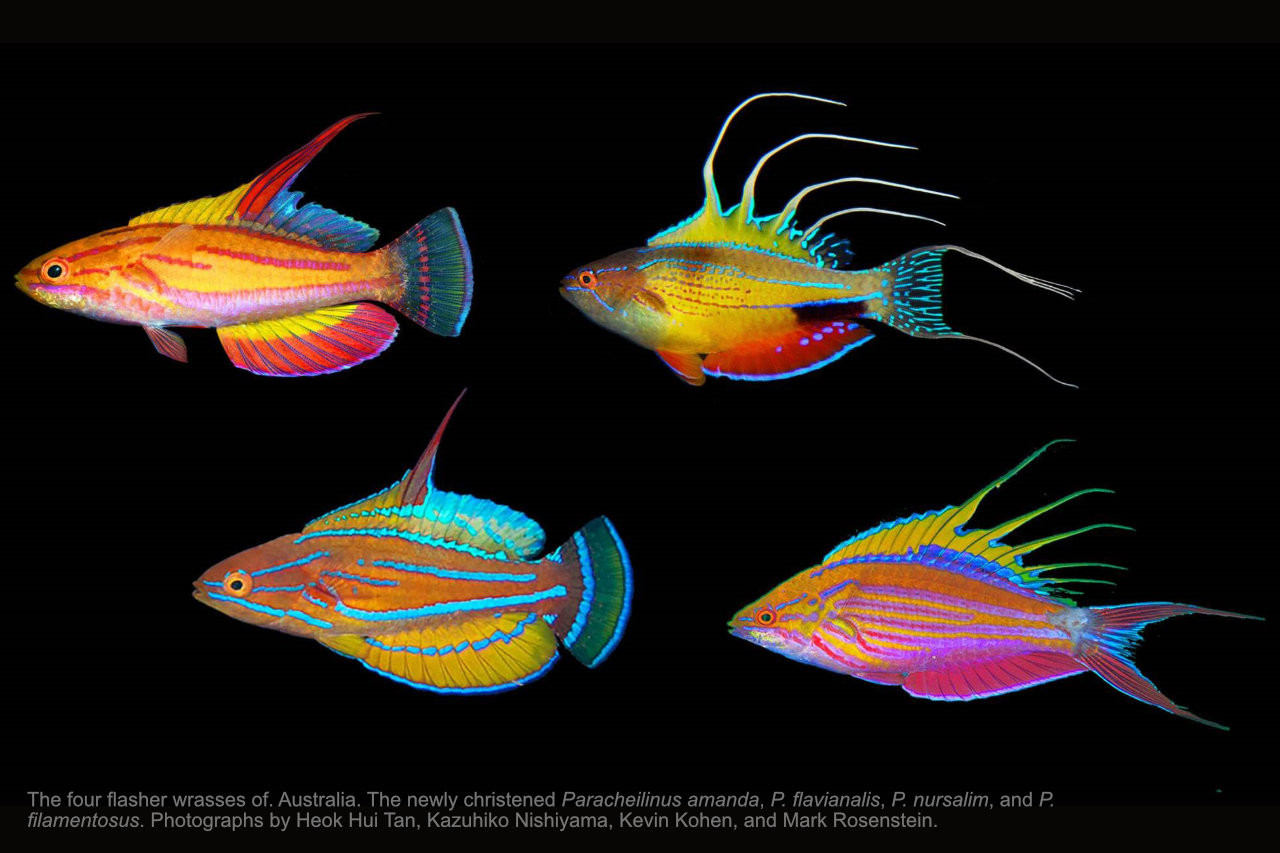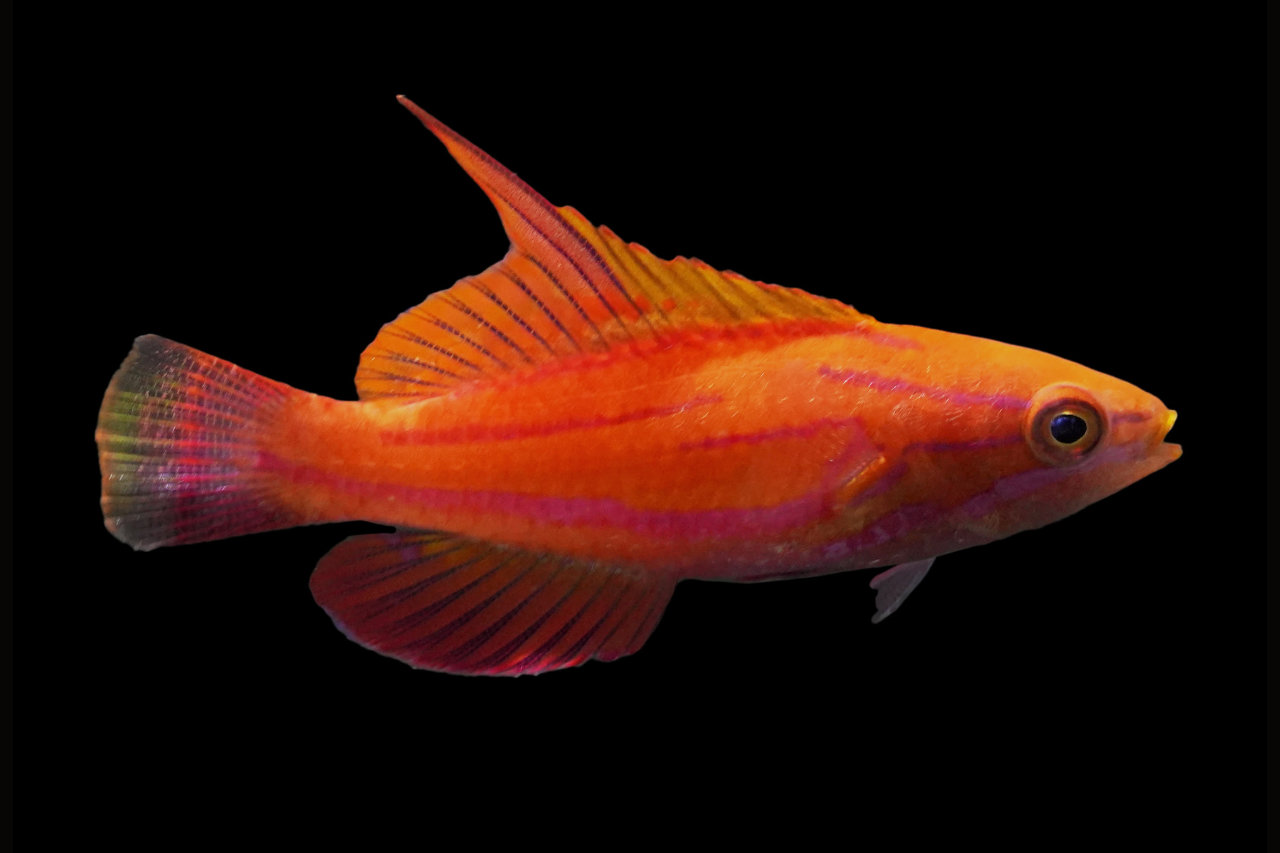Review of Australian Species of Paracheilinus Fourmanoir (Teleostei: Labridae), with Description of a New Species from the Great Barrier Reef and Coral Sea

The flasher wrasses are a captivating group of fish known for their dazzling courtship displays, characterized by males flashing iridescent neon colors to attract females and deter rival males. They have been long time favorites here at Quality Marine. The dedication to ichthyology by Yi-Kai Tea has yielded a great deal of advancements to scientific names of wrasse species. While flasher wrasses are beloved aquarium fish and relatively well-known, there is always more to discover about these fascinating creatures.
Flasher wrasses are a diverse group, with around twenty species found across the Indo-Pacific region. However, their distribution is not evenly spread, with the highest diversity found in the Coral Triangle. Despite Australia's proximity to this region, our understanding of the distribution and occurrence of flasher wrasses in Australia and its remote territories is limited.

A recent study published in Ichthyology & Herpetology aimed to shed new light on this popular group of fish. The study sought to determine how many species of flasher wrasses exist in Australia and to what extent their identities have been correctly identified. This research represents an effort to expand our knowledge of these colorful and charismatic fish in the Australian context.
The study you're referring to appears to be a fascinating exploration of flasher wrasses, a group of colorful and charismatic coral reef fish. Here are the key findings and implications highlighted in the study:
- Identity of Redtail Flasher Wrasse: The study revealed that the Redtail Flasher Wrasse (Paracheilinus rubricaudalis) found in Australia is, in fact, a distinct and geographically isolated species. This species, now known as Paracheilinus amanda, differs from the "true" P. rubricaudalis primarily in its color pattern and the presence of a dorsal filament consisting of three segmented rays.
- New Species Discovery: The research led to the discovery of a new flasher wrasse species, Paracheilinus amanda, named after Amanda Hay, the ichthyology collections manager at the Australian Museum. This species belongs to the P. mccoskeri species complex, which includes several closely related species with shared characteristics.
- Distribution of Flasher Wrasses: The study also clarified the distribution of flasher wrasses in Australia. It found that the Filamented Flasher Wrasse (Paracheilinus filamentosus), while often depicted in field guides of Great Barrier Reef fishes, had no verifiable Australian records except for a single specimen collected from Lizard Island in 2001. This highlights the importance of verifying species occurrences.
- Presence of Nursalim's Flasher Wrasse: The study confirmed the presence of Nursalim's Flasher Wrasse (Paracheilinus nursalim) in Australia. This species, known for its stunning appearance, was previously only recorded in the Bird's Head Peninsula region of West Papua, making its presence in Australia noteworthy.
- Importance of Museum Collections: The research underscores the importance of museum collections and systematic sampling. Even specimens collected many years ago, such as the one from Lizard Island, can contribute to our understanding of coral reef biodiversity. It emphasizes that comprehensive studies and careful examination of specimens can reveal new insights into the diversity of marine life.
Overall, this study highlights the ongoing process of discovery and reevaluation in the field of marine biology, particularly in understanding the diversity and distribution of coral reef fish species. It underscores the need for continued research and documentation to address the biodiversity crisis affecting marine ecosystems, even for well-known and colorful species like flasher wrasses. We look forward to seeing more research done on different species of wrasses.
To learn more please visit Yi-Kai Tea’s research paper https://www.researchgate.net/publication/373901958_Review_of_Australian_Species_of_Paracheilinus_Fourmanoir_Teleostei_Labridae_with_Description_of_a_New_Species_from_the_Great_Barrier_Reef_and_Coral_Sea